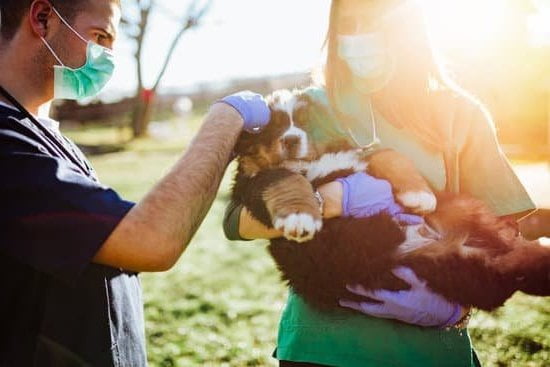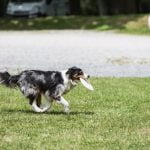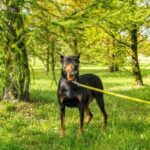Are you wondering how to train a pitbull not to attack other dogs? Pitbulls have unfortunately gained a reputation for aggression, but with the right training and socialization, they can be loving and well-behaved pets. Understanding the behavior of pitbulls and why they may attack other dogs is the first step in effectively training them.
Pitbull behavior is often misunderstood, and many people believe that they are inherently aggressive. However, the truth is that any dog, regardless of breed, can exhibit aggressive behavior if not properly trained and socialized. It’s important to understand the factors that contribute to a pitbull’s aggression towards other dogs in order to address and correct this behavior.
Assessing your pitbull’s aggression triggers is crucial in developing a training plan. By identifying what sets off your pitbull’s aggressive behavior, you can tailor your training approach to effectively address these triggers. Positive reinforcement training techniques are recommended when training pitbulls not to attack other dogs, as punishment-based methods can exacerbate aggression. This approach focuses on rewarding good behavior and teaching your pitbull alternative ways to respond in challenging situations.
Assessing Your Pitbull’s Aggression Triggers
It is essential to understand the underlying reasons for a pitbull’s aggressive behavior towards other dogs in order to effectively address and correct it. Pitbulls are known for their strong prey drive, which can cause them to display aggression towards other animals. This behavior can also be triggered by fear, anxiety, or past negative experiences. Understanding these triggers is crucial in training your pitbull not to attack other dogs.
One way to assess your pitbull’s aggression triggers is by observing their body language and behavior when they encounter other dogs. Look for signs of stress, such as growling, barking, or lunging. Take note of the specific situations or environments that seem to provoke this behavior. By identifying these triggers, you can better tailor your training approach to address your pitbull’s specific issues.
In addition to observation, seeking the guidance of a professional dog trainer or behaviorist can provide valuable insights into your pitbull’s aggression triggers and how to address them effectively. These experts have the knowledge and experience to evaluate your dog’s behavior and develop a personalized training plan to modify their aggressive tendencies.
| Aggression Trigger | How to Address |
|---|---|
| Prey Drive | Implement positive reinforcement techniques during interactions with other dogs |
| Fear or Anxiety | Gradual exposure therapy and desensitization exercises under the guidance of a professional trainer |
| Past Negative Experiences | Behavior modification training sessions focusing on building positive associations with other dogs |
Positive Reinforcement Training Techniques for Pitbulls
When it comes to training a pitbull not to attack other dogs, positive reinforcement techniques are often the most effective. These methods focus on rewarding good behavior rather than punishing bad behavior, creating a more positive and enjoyable training experience for both the dog and the owner.
Using Treats and Rewards
One of the most popular positive reinforcement techniques is using treats and rewards to encourage good behavior in pitbulls. When your pitbull exhibits non-aggressive behavior around other dogs, such as staying calm or following commands, be sure to reward them with their favorite treats or toys. This will help them associate their good behavior with positive outcomes.
Consistent Training and Praise
Consistency plays a key role in positive reinforcement training. Whether you’re working on leash training or introducing your pitbull to other dogs, it’s important to remain consistent with your commands and expectations. Additionally, be generous with praise when your pitbull displays non-aggressive behavior. Positive verbal cues and affectionate gestures can go a long way in reinforcing their good behavior.
Clicker Training
Clicker training is another effective positive reinforcement technique for pitbulls. By using a clicker paired with treats, you can mark desired behaviors in real time and then reward your pitbull accordingly. This method helps clarify what specific actions lead to rewards, making it easier for your pitbull to understand what is expected of them.
Overall, positive reinforcement training techniques can play a crucial role in teaching pitbulls not to attack other dogs. By using rewards, consistent training, praise, and clicker training techniques, owners can effectively manage their pitbull’s aggressive tendencies while promoting more peaceful interactions with other dogs.
Socialization Strategies
Pitbulls have a reputation for being aggressive towards other dogs, but this behavior is not inherent to the breed. With proper training and socialization, pitbulls can learn to interact peacefully with other dogs. Socialization is a crucial part of a pitbull’s development, and it is essential to start early and continue throughout their lives.
One key aspect of socialization is exposing your pitbull to various experiences, including interactions with other dogs. This exposure helps them become familiar and comfortable in different situations, reducing the likelihood of aggression. When introducing your pitbull to other dogs, it’s important to do so in a controlled and safe environment. Begin with calm, well-behaved dogs before gradually introducing them to more energetic or unfamiliar ones.
Positive reinforcement is also an effective technique when socializing your pitbull with other dogs. Rewarding good behavior with treats or praise reinforces positive interactions and helps your dog associate other dogs with positive experiences. Consistency is key in this training process, as it may take time for your pitbull to adjust to being around other dogs without exhibiting aggression.
It’s also important for pet owners to understand that every pitbull is an individual with its own personality and temperament. Some may be more naturally inclined towards aggression, while others may be more sociable by nature. Knowing your dog’s triggers and tendencies can help you tailor your training approach accordingly.
| Aspect | Details |
|---|---|
| Socialization | Introduce the pitbull to various experiences and interactions with other dogs. |
| Positive Reinforcement | Reward good behavior with treats or praise to reinforce positive interactions. |
| Individuality | Understand that every pitbull has its own personality and temperament. |
Leash Training Tips to Control Aggressive Behavior
When it comes to training a pitbull not to attack other dogs, leash training is an essential aspect of their behavioral management. Proper leash training can help you maintain control over your pitbull and prevent aggressive behavior towards other dogs while on walks or in public spaces. Here are some important tips for leash training your pitbull to control aggressive behavior:
1. Use a sturdy and comfortable leash: Invest in a high-quality, strong leash that gives you better control over your pitbull. A sturdy leash helps in restraining your dog if they show signs of aggression towards other dogs during walks.
2. Practice obedience training on the leash: Start with basic obedience commands such as “sit,” “stay,” and “heel” while on the leash. Teaching your pitbull to obey commands while leashed can help you redirect their attention away from other dogs and prevent potential confrontations.
3. Gradual desensitization to other dogs: Take your pitbull on controlled walks in areas where they are likely to encounter other dogs, but at a safe distance. Gradually decrease the distance over time as your pitbull becomes more comfortable with the presence of other dogs.
Remember that consistent and patient training is key when it comes to achieving successful results in controlling your pitbull’s aggressive behavior on the leash. By employing these tips, you can effectively train your pitbull not to attack other dogs while out for a walk or in public settings.
Seeking Professional Help
When to Seek Professional Help
If you have tried positive reinforcement training techniques, socialization strategies, and leash training tips without success, it may be time to seek professional help. A pitbull trainer or behaviorist can provide specialized assistance in addressing your dog’s aggression towards other dogs. It is important to recognize when your own efforts are not yielding the desired results and when it is time to bring in a trained professional.
Choosing the Right Trainer or Behaviorist
When looking for a pitbull trainer or behaviorist, it is crucial to find someone with experience and expertise in dealing with aggressive behaviors in dogs. Look for professionals who have a background in working specifically with pitbulls and understand their unique characteristics. Additionally, seek out recommendations from other dog owners or veterinarians to find a reputable professional who can effectively address your pitbull’s aggression towards other dogs.
Working With a Professional: What to Expect
A pitbull trainer or behaviorist will assess your dog’s behavior and work with you to develop a tailored training plan that addresses the underlying causes of aggression towards other dogs. They may use techniques such as desensitization and counter-conditioning to change your dog’s response to triggers that lead to aggressive behavior. Through consistent guidance and support, a professional can help you modify your pitbull’s behavior and cultivate a more positive relationship with other dogs.
By seeking professional help, you can gain valuable insights into how to train a pitbull not to attack other dogs effectively, ensuring the safety of both your own pet and other animals in your community.
Understanding Legal Responsibilities and Pitbull Ownership
Pitbulls have gained a reputation for being aggressive and dangerous dogs, often leading to legal restrictions and regulations on their ownership. As a pitbull owner, it is crucial to understand the legal responsibilities that come with owning such a breed. It is important to be aware of the specific laws and ordinances in your area regarding pitbull ownership, which may include leash requirements, mandatory muzzling in public, or obtaining liability insurance.
To ensure responsible ownership of a pitbull, owners must also be knowledgeable about their legal obligations in the event of an incident involving their dog. This includes understanding liability laws and being prepared to take responsibility for any damages or injuries caused by their pitbull. In some cases, owners may be required to demonstrate that they have taken measures to train and control their dog’s aggression.
Furthermore, pitbull owners should stay informed about any changes in legislation or regulations pertaining to their breed. It is essential to stay updated on local and state laws regarding pitbull ownership, as well as any proposed legislation that may impact pitbulls and their owners. By staying informed and compliant with legal responsibilities, pitbull owners can help dispel negative stereotypes associated with the breed and promote responsible ownership.
- Familiarize yourself with local laws and ordinances related to pitbull ownership
- Take responsibility for any incidents involving your pitbull
- Stay informed about potential changes in legislation impacting pitbull ownership
Pitbull Myths and Misconceptions
Pitbulls often have an undeserved reputation for aggression towards other dogs. This stereotype is perpetuated by misinformation and sensationalized media coverage. However, it is important to understand that any dog’s behavior, including a Pitbull’s, is influenced by various factors such as genetics, environment, and socialization. It is crucial for Pitbull owners to dispel these myths and misconceptions to promote responsible ownership and safe interactions with other dogs.
One of the most common myths surrounding Pitbull aggression is that they are inherently dangerous and unpredictable. In reality, a Pitbull’s behavior towards other dogs can be shaped through proper training, socialization, and positive reinforcement techniques. By understanding the breed’s traits and tendencies, owners can effectively address any aggressive behavior in their Pitbulls.
Another misconception is that Pitbulls have a “locking jaw” mechanism that makes them more dangerous than other breeds. This myth has been debunked by experts in veterinary medicine, who confirm that there is no physiological evidence to support this claim. By educating the public about these false beliefs, Pitbull owners can advocate for fair treatment of their beloved pets and work towards creating a safer environment for all dogs.
It is essential for Pitbull owners to actively challenge these stereotypes by showcasing their well-trained and well-socialized dogs. By providing positive examples of responsible ownership, they can contribute to changing the negative perception of Pitbulls in society. Through awareness and education, we can empower Pitbull owners to train their dogs not to attack other dogs and promote harmonious relationships within the canine community.
Conclusion
In conclusion, responsible and safe dog ownership is crucial when it comes to owning a Pitbull. Understanding their behavior, assessing aggression triggers, and implementing positive reinforcement training techniques are essential in training a Pitbull not to attack other dogs. It’s important for Pitbull owners to be proactive in socializing their pets with other dogs and mastering leash training to control aggressive behavior.
Seeking professional help from a Pitbull trainer or behaviorist can also greatly benefit owners who are struggling with their dog’s aggression issues. These experts can provide personalized guidance and support to address specific behavioral concerns, ultimately promoting responsible ownership and safety within the community.
By dispelling myths and misconceptions surrounding Pitbull aggression, we can empower owners to become advocates for their beloved pets while promoting a positive image of the breed. With dedication, patience, and proper training techniques, Pitbulls can become well-behaved, friendly companions who coexist peacefully with other dogs in our neighborhoods.
Ultimately, it is up to us as responsible dog owners to invest the time and effort into properly training our Pitbulls not to attack other dogs, ensuring a harmonious relationship between our pets and the world around them.
Frequently Asked Questions
How Do I Get My Pitbull to Stop Attacking My Other Dog?
Getting your Pitbull to stop attacking your other dog requires careful management and training. Start by keeping them separated and consulting a professional dog trainer who can help address the root cause of the aggression.
Can You Train Aggression Out of a Pitbull?
Yes, it is possible to train aggression out of a Pitbull through proper training, socialization, and positive reinforcement. However, this process should be done under the guidance of a professional dog trainer or behaviorist.
What Triggers a Pitbull to Attack?
Several factors can trigger a Pitbull to attack, including fear, stress, resource guarding, lack of socialization, pain or discomfort, and previous negative experiences. Understanding these triggers can help in preventing future attacks and addressing the underlying issues that may be causing the aggression.

Welcome to the blog! I am a professional dog trainer and have been working with dogs for many years. In this blog, I will be discussing various topics related to dog training, including tips, tricks, and advice. I hope you find this information helpful and informative. Thanks for reading!





